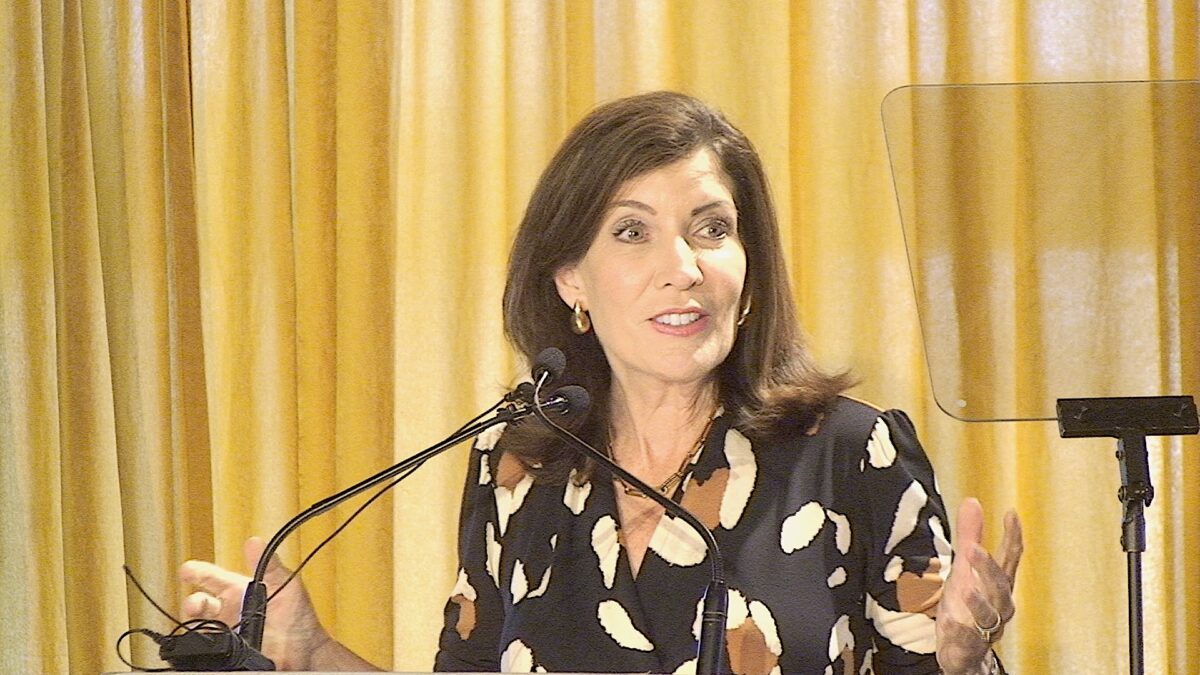It will come in the body of a common sport utility vehicle, but the petroleum-free future and technological hope of the automotive industry soon will appear in driveways and on highways in Westchester County.
Just don”™t wander too far from home, General Motors officials are advising test drivers of their electrically powered Chevrolet Equinox Fuel Cell SUVs in the metropolitan New York area. Hydrogen fueling stations still are few and far between. You might need a tow.
GM, which has invested about $1 billion to date in research and development of fuel cell technology, this month launched its Project Driveway with the deployment of five Equinox fuel cell vehicles in the Los Angeles, Calif. area. Users include executives at The Walt Disney Company, a business partner in GM”™s two-and-a-half- to three-year trial project, said Daniel O”™Connell, director of fuel cell commercialization at the GM Fuel Cell Activities Center in Honeoye Falls, near Rochester. The project also will include drivers in metropolitan Washington, D.C.
O”™Connell said about 14,000 persons applied at GM”™s Project Driveway Web site to take part in the project. Screened and selected drivers will keep the vehicles for two to three months before they are passed on to other participants, he said. Their notes and information on their driving and fueling experiences, shared on a private blog maintained by GM, will be used by the company to develop and market future generations of fuel cell vehicles.
In Tarrytown last May, GM officials celebrated a milestone in automakers”™ competitive race to develop fuel cell vehicles for the commercial market when two Chevrolet Sequels, emitting water vapor and no greenhouse gases from tailpipes, completed the 300-mile trip from Honeoye Falls. They were said to be the first hydrogen-powered vehicles to travel that distance on public roads without refueling ”“ and without stalling out on the Tappan Zee Bridge in the crawl of evening rush-hour traffic.
Unlike the Sequel, whose skateboard chassis and by-wire steering and braking system were built around its fuel cell technology, the demonstration Equinox is a mass-production vehicle whose gas engine has been replaced with a fuel cell pack. Its fuel tank holds 4 kilograms of hydrogen ”“ the equivalent of four gallons of gas. Averaging an estimated 43 miles per gallon ”“ about twice the mileage of a gas-fueled Equinox ”“ it can travel 150 to 160 miles before refueling. Assembled at the GM plant in Oshawa, Ontario, Canada, about 100 of them will be used in Project Driveway, said O”™Connell.
Starting in the next few weeks, GM plans to deploy 25 to 30 vehicles in Westchester County and the surrounding area, he said. For participating drivers, “The only restriction is to not drive to Buffalo and run out of fuel on us so we”™ve got to pick them up,” said O”™Connell. Drivers are advised to stay within a 75-mile range of available fueling stations.
The city of White Plains last year opened a $500,000 hydrogen refueling station at its public works garage on South Kensico Avenue in partnership with Shell Hydrogen L.L.C. Shell Hydrogen also is a partner with GM in Project Driveway, and half of the hydrogen gas storage and production capacities at the city station will be used by project drivers. Chevrolet will pay for their fuel.
O”™Connell said drivers also can refuel at the GM Training Center in Ardsley. The company will add two stations, in the Bronx and near JFK Airport in Queens. “That will pretty much cover the New York City area,” he said.
Building a national infrastructure of hydrogen refueling stations is one of three “major milestones” that automakers must reach to make fuel cell vehicles commercially viable, O”™Connell said. “With any fuel change, it”™s a major undertaking,” he said. There are 170,000 petroleum fuel stations in the U.S., he noted.
GM has focused on “starting small” in a few cities with a goal of building up infrastructure to 40 stations in one or two of the Project Driveway cities, O”™Connell said. Eventually hydrogen stations could be built at about 25-mile distances on interstate highways, he suggested.
If 12,000 of the nation”™s 170,000 stations supplied hydrogen fuel, that would meet drivers”™ needs, he said. “I think there”™s a real opportunity to get things rolling with a minimal investment,” he said.
The GM executive said developers also need to improve and assure the durability of fuel cell systems, especially in cold weather. “Everyone has proven you can take a fuel cell vehicle and drive them around. Next, can you free-start them” in temperatures below freezing? O”™Connell said GM has done cold starts on its fuel cell Equinoxes in Canada at minus-20 degrees Celsius.
O”™Connell said automakers”™ major challenge is to lower the cost of fuel-cell vehicle production to put it at par with the internal combustion engine. High-volume production is needed to realize the economies of scale that will make the enterprise commercially competitive, he said
At GM, the cost to build fuel-cell vehicle has decreased “by a factor of 10” since the start of production seven years ago, O”™Connell said. Further cost reductions will require “probably another factor of 10 to put us in the ball game of a high-volume internal combustion car,” he said.
As for when GM will begin commercial production of its fuel cell vehicles, “We”™re letting the technology drive us there,” O”™Connell said. Project Driveway “offers us a great opportunity to get to a zero-emission vehicle.”
In Tarrytown last year, Lawrence Burns, GM vice president for research and development and strategic planning, said the company will start commercial production of the Chevy Sequel in 2011 or 2012. China, whose automotive infrastructure is largely undeveloped, could be a potentially lucrative market, he said.
At GM, “We really want to move away from petroleum,” O”™Connell said. “That”™s our goal ”“ to over time get this electrification of the vehicle and eliminate petroleum as our single source of fuel.”


















